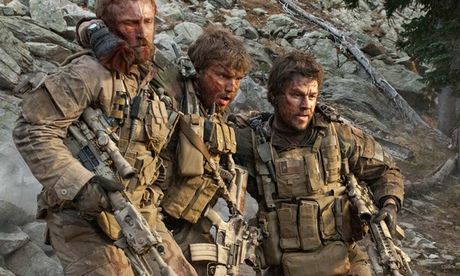
I served all over the world in the 1990s. There are several key similarities between the work of the SAS and the Navy Seals, the elite American soldiers depicted in this film. Both involve highly trained soldiers operating in very small groups in remote enemy territory. The mountains of Afghanistan we see in the film are very like the area of Kenya where British soldiers train today.
The Seals face a moral dilemma: kill a group of Afghans in order not to compromise their mission, or let them go unharmed. It's a familiar situation. Not only is Lone Survivor based on Marcus Luttrell's account of a real 2005 Seals mission, there have been a number of similar incidents over the years. Bravo Two Zero, the SAS patrol in Iraq made famous by Andy McNab, were compromised by a goatherd and had to make that same decision.
I would hope that any soldier – any human being, really – would choose not to harm a civilian, even if it meant their mission would be in danger. There was a case back in the 1960s, involving British soldiers in Aden, Yemen, where they made the choice to shoot. It still ended badly for all concerned.
The fighting scenes are pretty good for a Hollywood movie – the Seals are remarkably accurate shooters. In reality, if you get shot, you're not usually in a condition to continue. I suppose some people would find these scenes off-putting. It depends on your perspective. The opening scenes of Saving Private Ryan are routinely used by military recruiters to show how exciting soldiering is.
The film uses footage of the men in the real-life Seals mission. Some critics have called this crass, but I disagree. If any recent film is crass, it's Black Hawk Down: essentially just white guys against black guys. Lone Survivor is both more nuanced and more realistic. It depicts the atmosphere within special operations forces quite well. You work in such small groups, in terrible conditions. Whether you're a Navy Seal or an SAS officer, your loyalty to your fellow soldiers is absolute.
• John Richards is a pseudonym

